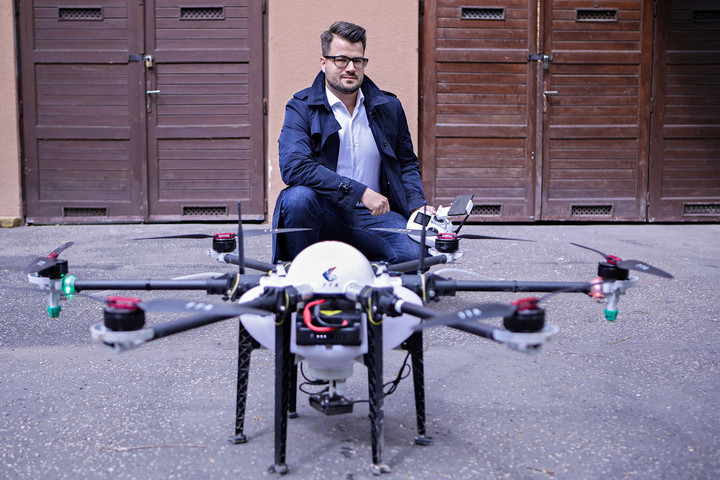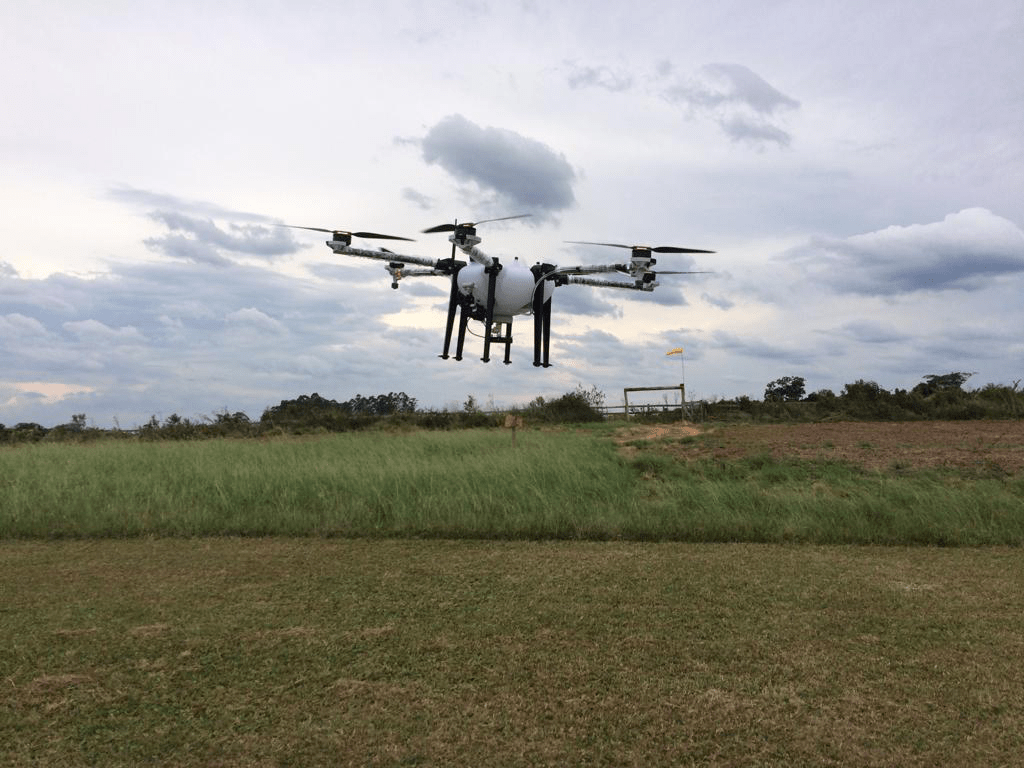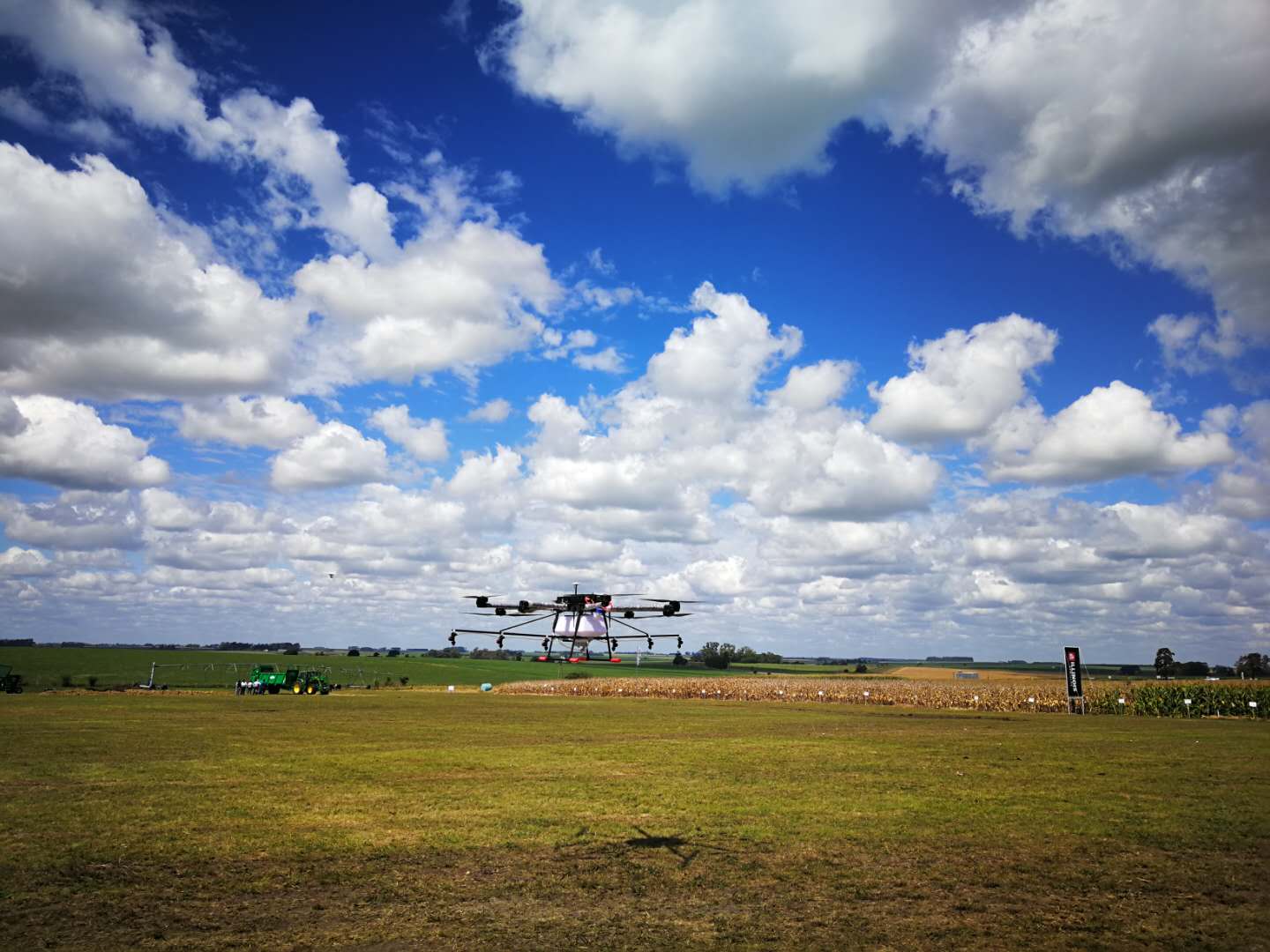
A smaller structure with a 10-liter tank sprays a hectare in ten minutes, and you can see the vegetation damage from the airspace before you can see it from the ground.
“There are many possibilities for the industrial use of drone technology, starting with lifesaving emergency blood and organs transport, cartography, archaeological studies, construction project tracking and surveys, right up to spraying.” CEO of TTA Hungary.

It is a pleasure that the government is looking for a way to digitize agriculture.
How widespread is the use of industrial drones in Hungary?
In our country, there are hundreds of thousands of drones, but most of them are small, hobby – like drones or toys. Industrial use has recently started to spread mainly through the media, surveying and mapping, real estate and security services, 3D modeling as well as the field of agriculture.
What is the role of this market in the domestic economy?
At the moment, a few dozen companies may be specifically active in industrial drone services, but we have recently read that one of the utility providers is also deploying a drone to investigate the electrical grid. Such use, in addition to making work more efficient, can also significantly reduce the risks for professionals, think only of rescue work or avoiding an accident hazard.

Legally, how prepared are we? Is the current regulation sufficient, or is further refinement needed?
A case-by-case airspace permit is currently required for the legal flying of drones. The acquisition process is that, thirty days before each take-off, a case-by-case use of airspace is required for three thousand forums. If we get permission, we’ll have to check in on the phone before we take off to use the airspace and then announce again after landing that we’ve completed the flight, and I don’t have to say that this regulation is not really designed for the use and number of drones, but… originally in cases where, for example, we hold fireworks or air shows at an event, we do not endanger commercial airspace. According to the news, legislators are already working on a new, more viable and simpler regulation.
What sectors are the best use of drones?
The industrial use of drone technology has many possibilities. Starting with examples such as life-saving emergency blood and organs transport, cartography, archaeological studies, construction project follow-up and surveys as well as spraying. The last point is that the drone, flying around the board, takes a non-distorted, GPS-indexed, high resolution aerial photograph. It is constructed from several images by an algorithm, and the completed map quickly allows measurements and analyses to be made using only a mouse collection.
A thermal map indicating the state of vegetation in a given area, where stain treatment and intervention a re required, based on the photo reflective properties of leaves. This is important because, in many cases, the problem is already visible when we do not detect it from the ground; although there is a great deal of interest in drone spraying, it is only possible to use it legally under certain restrictions. That is why we have launched a pilot programme to help interested farmers to obtain the necessary pilot license and, in summary of the experience gained, we are also trying to help the professionals of the authorities concerned, so that they can gather as soon as possible sufficient domestic experience for legislative framework.

Are Hungarian farmers interested in this technology?
Drone spraying certainly has a bright future ahead of it. It is sufficient to think that even a small drone with a 10-liter tank can in ten minutes, almost plough a hectare in fully automatic operation without being damaged by treadmill or influenced by factors such as mud or inland water. g with a farmer or an agricultural expert who would have been indifferent to the subject. Of course, that doesn’t mean that everyone is positive about it, because obviously there are skeptics. However, we are now working to demonstrate, with as many experiments as possible, that the technology is effective, environmentally friendly, affordable and, in addition to the appropriate expertise, it can bring many benefits to Hungarian agriculture. We welcome the fact that the government is also looking for a way to digitise agriculture, which can also make the sector more attractive to young people. Important elements of this may be drones, whether for cartography, analysis or spraying purposes.
What’s the cost of a drone like this?
If you look at them as an agricultural machine, the price of spray drones is almost negligible compared to, say, a tractor, you have to think roughly about the price of an entry-grade new car. New models fly with a battery whose charging cost is not equal to the net forty points, so that, in the case of crop spraying, roughly six hundred take-offs and, in the case of work in grapes or orchards, they can be recovered in up to two hundred take-offs. That’s not even close to the lifespan of a machine. This, of course, did not include the cost of the oil truck for the tractors, the cost of staff at least two, and the water saved, as the drones use up to ninety percent less of this. I have recently been to China, where I have already been able to test technologies such as drone fleet deployment, where a remote control controls more drones, or even petrol-electric hybrid-powered drones, which solve the capacity constraints of batteries.

How do you see the future of drone technology and the drone market in our country?
Technologies aren’t fundamentally new, the drone’s home country, China, has been using spray drones for over a decade. Their domestic spread is mainly dependent on regulation, as their use is justified in many places, both financially and in nature conservation terms and technically. I believe that the primary task of market players is to familiarise themselves with technology as widely as possible and to support the reduction of environmental pressures by using drones and the increase in efficiency in many areas of the economy.